List of Leaves to Feed Shrimp
Foliage for the aquarium + foliage list
Foliage as food
Foliage lying on the bottom of the water is used as a hiding place as well as a permanent food supply. Mangrove crabs eat a few kilos of foliage material in the course of their lives! Crayfish also like to help themselves directly to the leaves lying in the water. Dwarf shrimps tick a little differently, as do some snails: Their claws or rasping tongues are not hard enough for leaves that have just fallen into the water, so they first graze the biofilms that soon form on the foliage. However, once the leaf tissue has been broken up and made friable by the bacteria in the biofilms, the leaf mass itself is also eaten by the shrimp and also by the snails.
Collect foliage yourself
Foliage is a good food to collect yourself. When choosing a collection area, make sure the trees are not on busy roads, not right next to fields or orchards that are sprayed, and of course not right in or near an industrial area. If you don't have access to an area with reasonably clean air, you should get your leaves commercially - for example, from our store.
For brown foliage, it more or less doesn't matter if you pick it up off the ground (not exactly on dog walks or otherwise heavily polluted areas) or take it off the tree. Green foliage should be picked when the sun has been able to shine on the tree for a few hours, then the essential oil content is highest.
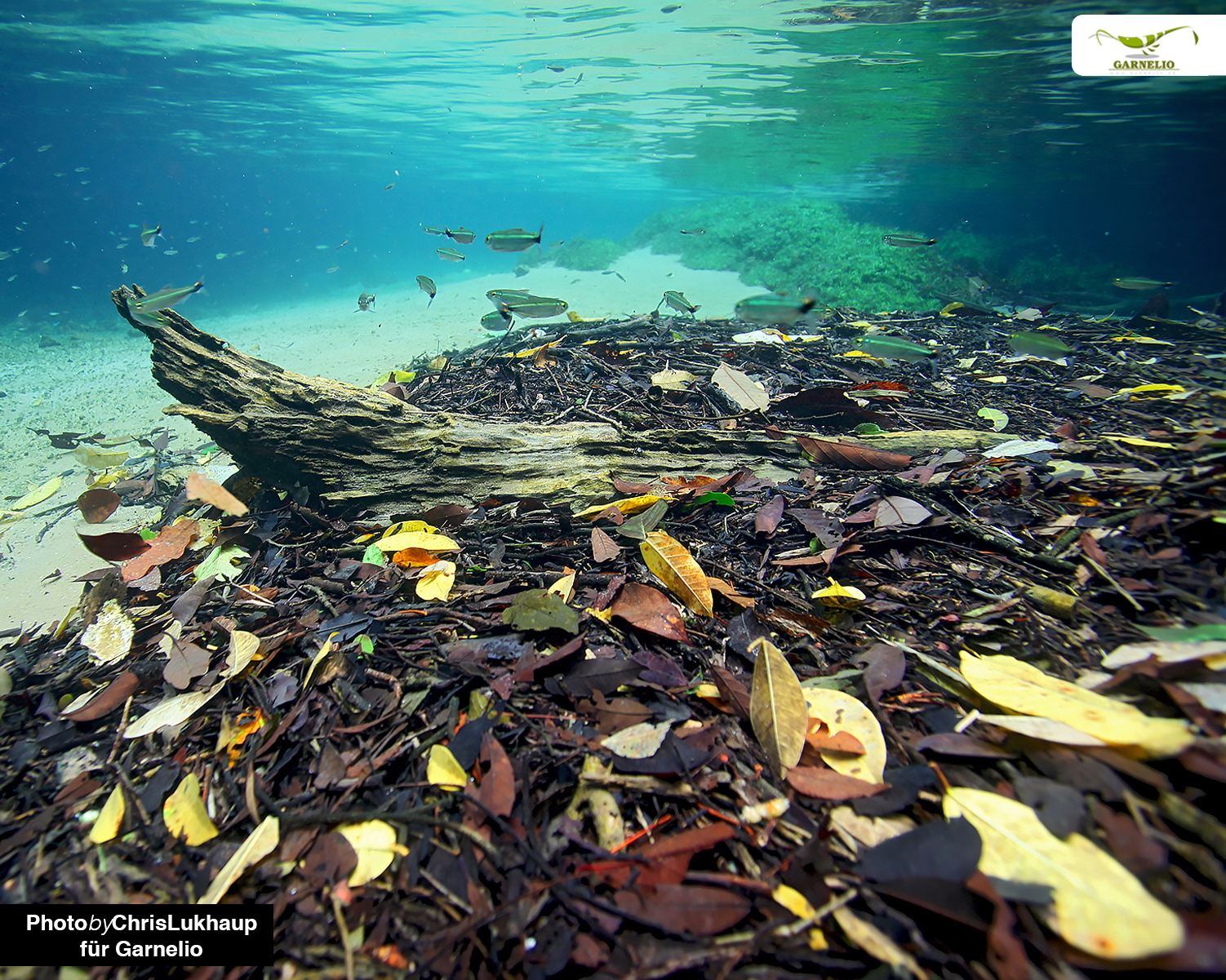
Storing foliage
Before storing the foliage must first be dried. To do this, hang green leaves in an airy place in the shade, brown leaves simply spread out in the room and let them dry. Only leaves that are crackle-dry should be stored; residual moisture in the foliage can lead to mold, which can cause the leaves to spoil. Moldy foliage must be thrown away, it must not be fed under any circumstances!
Ideally, foliage (whether dried brown or green) is not stored under exclusion of air because of the risk of mold. Cardboard boxes, paper bags or cloth bags work well. Tupperware and similar tightly sealed containers are unsuitable.
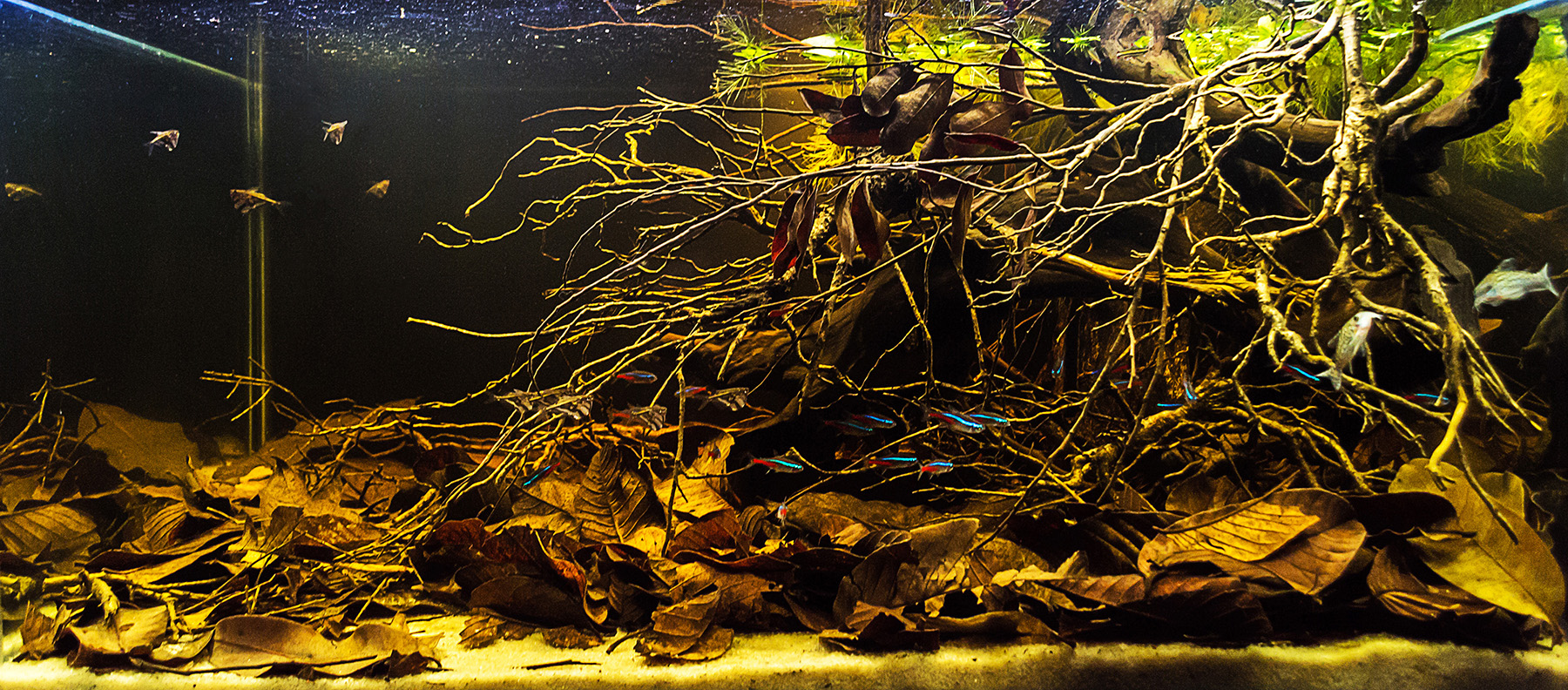
Use leaves in the aquarium
The dry brown foliage can simply be added to the aquarium. In nano aquariums large leaves can be very disturbing, here the foliage is simply crumbled coarsely between the hands and scattered on the water surface. The leaves will float here for another day or two, but when they have become saturated, they will then sink. If you want the leaves to sink directly, you should first scald them very briefly with boiling water or weigh the leaves down with a small stone or similar.
In aquariums with invertebrates and also in terrariums with crabs it is very useful to feed foliage. However, it is necessary to distinguish between sugary green and colored foliage on the one hand and really brown autumn foliage on the other hand.
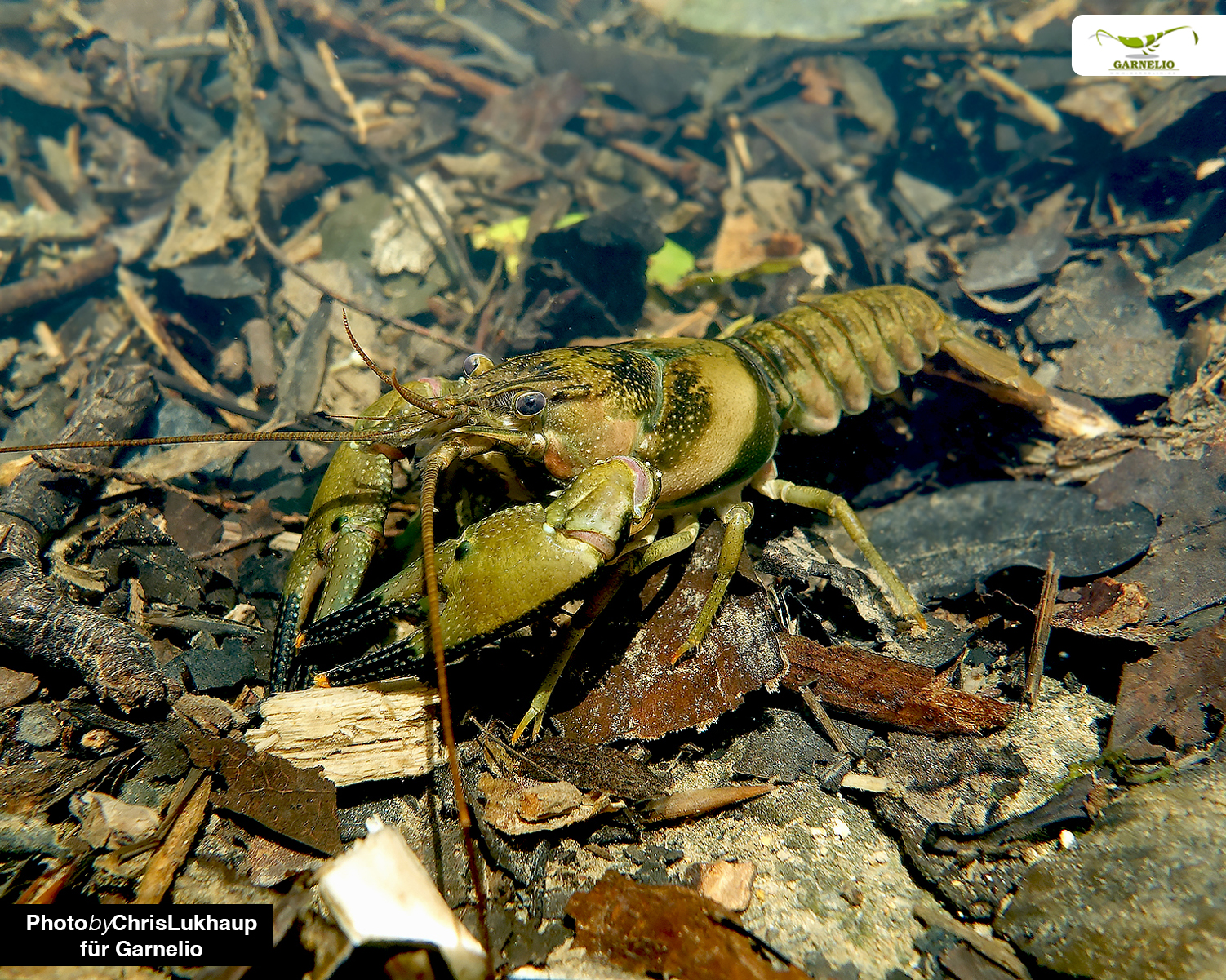
Green foliage in the aquarium
Green foliage can contain a lot of sugar, with carbohydrates making up well over a third of the dry mass in some species. In addition to the monosaccharides and polysaccharides produced by the chlorophyll, these include the sugary anthocyanins - red and yellow pigments that are outshone and masked by the green of the chlorophyll. Green foliage is therefore not suitable as a permanent food in the aquarium, it should be dosed so that it is eaten completely within a few hours. Too many carbohydrates in the aquarium can increase the number of bacteria in the water, which can lead to big problems, especially in shrimp aquariums with sensitive shrimp like bee shrimp or Taiwan Bees.
An exception here are leaves, which are used for their medicinal effect. Here, higher doses can also be used.
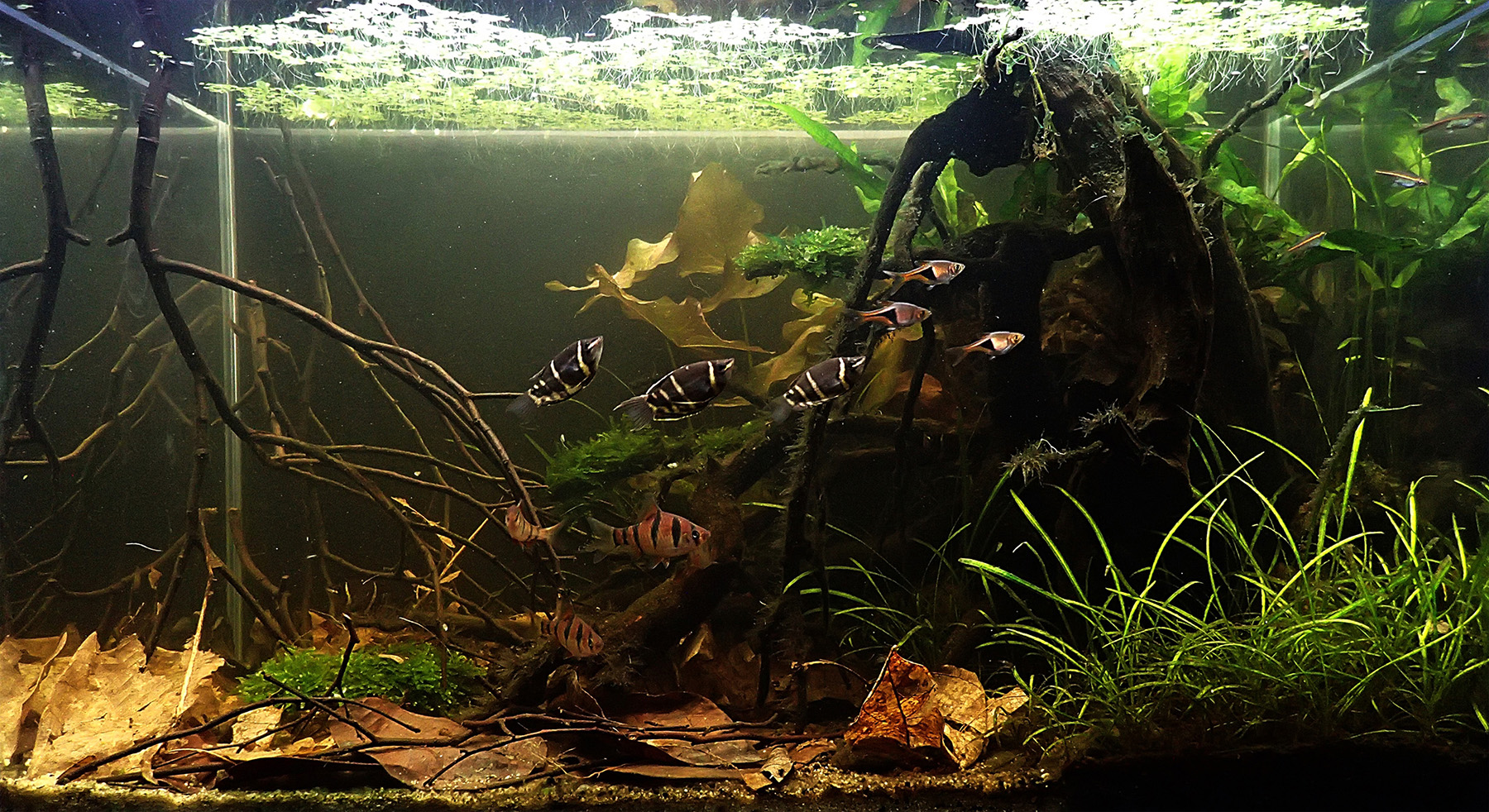
Red, orange and yellow autumn leaves still contain a large amount of colorants: the sugar-containing anthocyanins, which are increasingly produced in autumn. They should also be treated like green leaves and should not remain permanently in the aquarium or should only be introduced in a very small quantity.
During very dry periods in summer - keyword drought stress - the trees also withdraw the chlorophyll from the leaves and then discard them. Here, however, it is assumed that the foliage then contains even more sugar than "normally" dropped autumn leaves, because the process is faster. Brown leaves collected in summer should therefore not be used, or should only be used like green leaves.

Leaves from native trees and shrubs used green as food in the aquarium
Walnut(sticks / branches)
In addition to its medicinal properties, walnut is an excellent food for shrimp, crayfish and snails, which really like to eat, so it is often fed even without an acute need because of an infection raging in the aquarium. For this purpose, you do not necessarily have to resort to dried leaves, you can also feed green scalded walnut foliage. However, while green dried leaves can remain in the aquarium, scalded leaves should be taken out again. Unfortunately, due to the heat it loses many of its beneficial ingredients and then no longer has such a strong antibacterial effect, which means that it should only be fed in quantities that are eaten in about half a day.
Walnut trees are often cultivated in large gardens, but you can also find them in the forest if you are lucky.
Blackberry(leaves / whole leaves)
Blackberry leaves have long been a proven food for terrarists and other herbivorous animals. Blackberries are evergreen, so their foliage is available fresh year-round. The leaves contain many tannins, and they are very rich in vitamins.
Be careful when gathering them: Blackberry vines, as well as the leaves themselves, are very prickly and you can get nasty injuries. Sturdy gloves are certainly not amiss when collecting.
The foliage is quite soft and is readily eaten. It is used dried or scalded.
Blackberries can be found wild, especially at the edge of the forest, but also in gardens. Attention, in gardens is often sprayed, here please ask in any case, whether the foliage can be used without hesitation!
Raspberry(buy)
More or less exactly the same applies to raspberry leaves as to blackberry leaves. They contain flavonoids and tannins and may even be anti-inflammatory.
Raspberry leaves are also used scalded green or dried green.
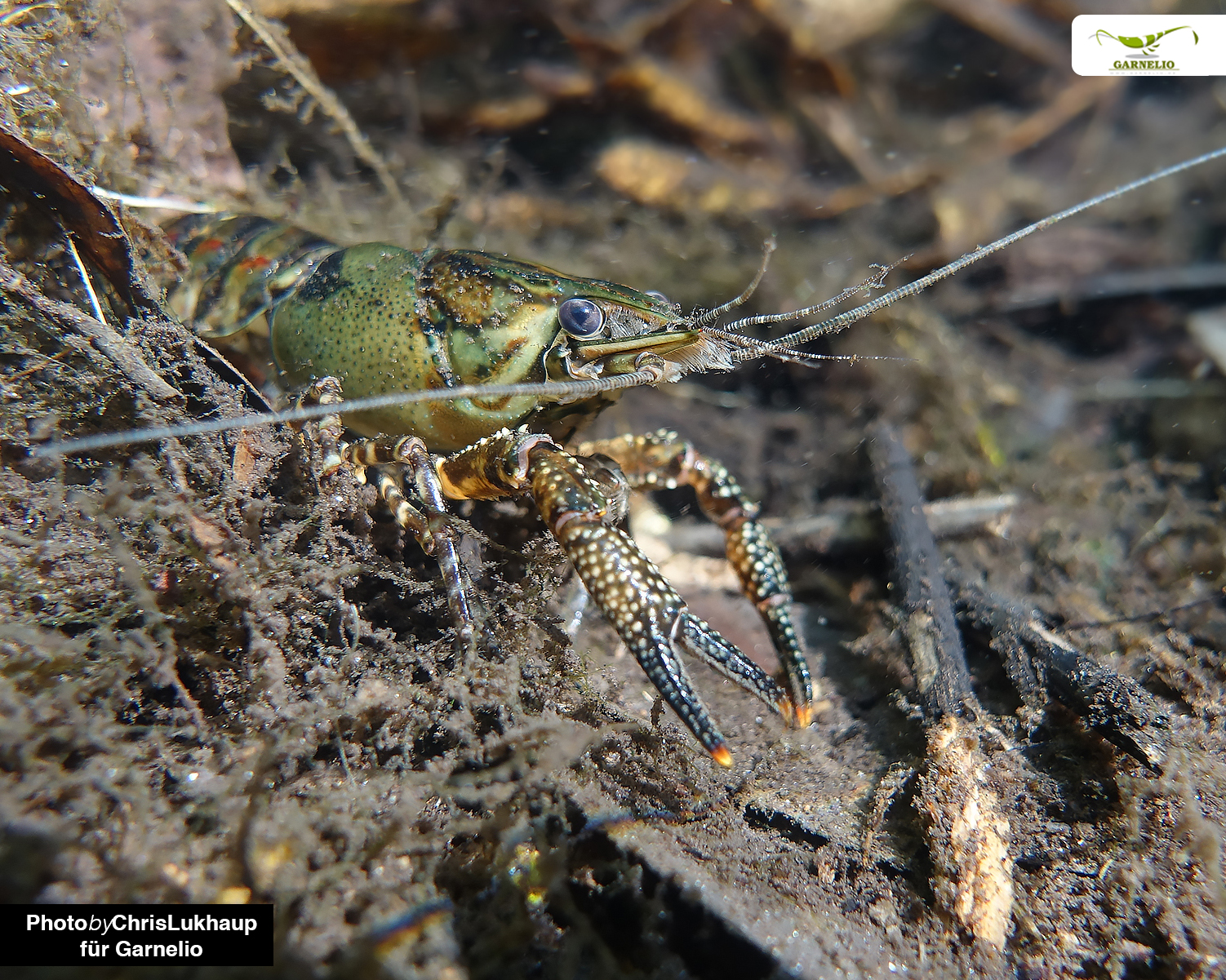
Hazel bush(buy)
Hazelnut foliage can be fed green dried or over-broken. The relatively thick foliage is readily eaten if it has been previously softened well by over-brewing.
Mulberry(leaves / whole leaves)
Mulberry foliage picked green, dried or scalded over is an excellent shrimp food, but is also really liked by crayfish and crabs. It contains calcium, tannins and polyphenols and is extremely rich in vitamins.
Mulberry trees were intensively planted because the leaves were used as food for silkworms in silk production. As a result, the tree, which is not actually native to our region, has become established in many areas.
Old mulberry cultivars still stand in fields from time to time, but mulberry trees can also be found in parks and gardens and running wild in nature.
True fig
Fig trees are usually not very hardy in our country, but they can be found in gardens from time to time. In our country, the true fig is usually not a tree, it grows rather shrubby. Kept frost-free (for example, in the winter garden), the fig is evergreen, so provides food throughout the year. Outdoors, the fig loses its leaves after the first frost.
Fig leaves are used dried green, but the dry fallen leaves after frost can also be fed.
Leaves of native trees used green as a natural remedy in the aquarium
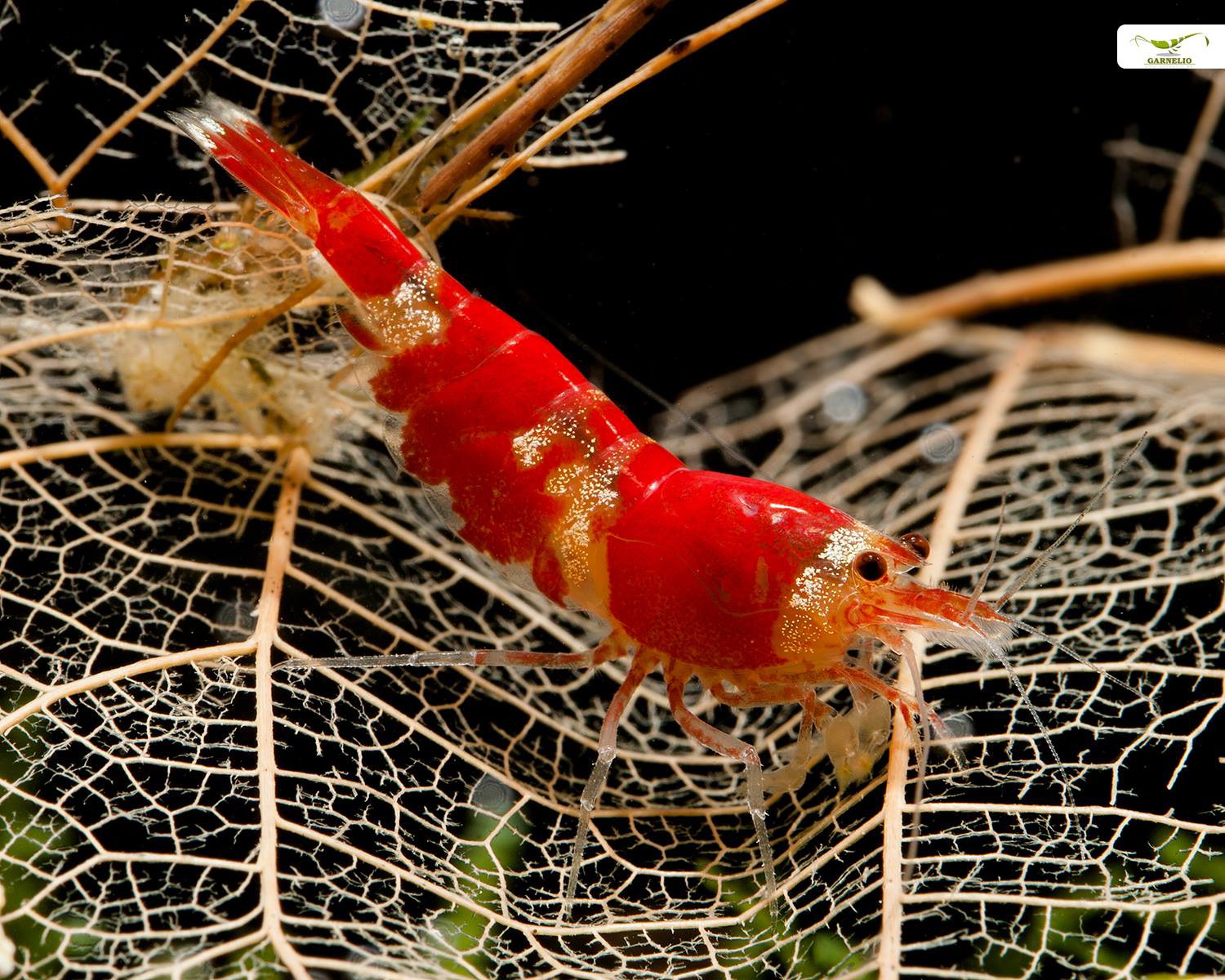
Walnut
The foliage of the walnut tree is rich in tannins and polyphenols, which are effective against bacteria and fungi. Walnut foliage is used dried green. It is not scalded, so that the valuable ingredients are not lost. and fungicidal.
For the treatment or support of acute bacterial infections, about 5-7 leaves per 100 liters of aquarium water are used, in the nano about 2 leaves per 30 liters of aquarium content. The leaves remain in the aquarium. If necessary, add again when the leaves are eaten.
Birch(buy)
Green birch leaves are used in the aquarium hobby against fungal diseases and also against ulcers in fish. For invertebrates such as shrimps and crayfish, green birch leaves are used to support infections with bacteria and fungi.
Use 1-2 leaves per 10 liters of aquarium water.
Brown autumn leaves
Brown leaves are ideal for use in the aquarium. In autumn the tree has removed all sugars from the leaves and the chlorophyll (leaf green) from them, so no new carbohydrates are produced. The leaves are in themselves much less energy-rich than green foliage. For this reason they can remain permanently in the aquarium and do not have to be taken out again. In addition to minerals and dietary fiber, brown leaves also contain other substances important for invertebrates, such as tannins and - depending on the species - humic substances.
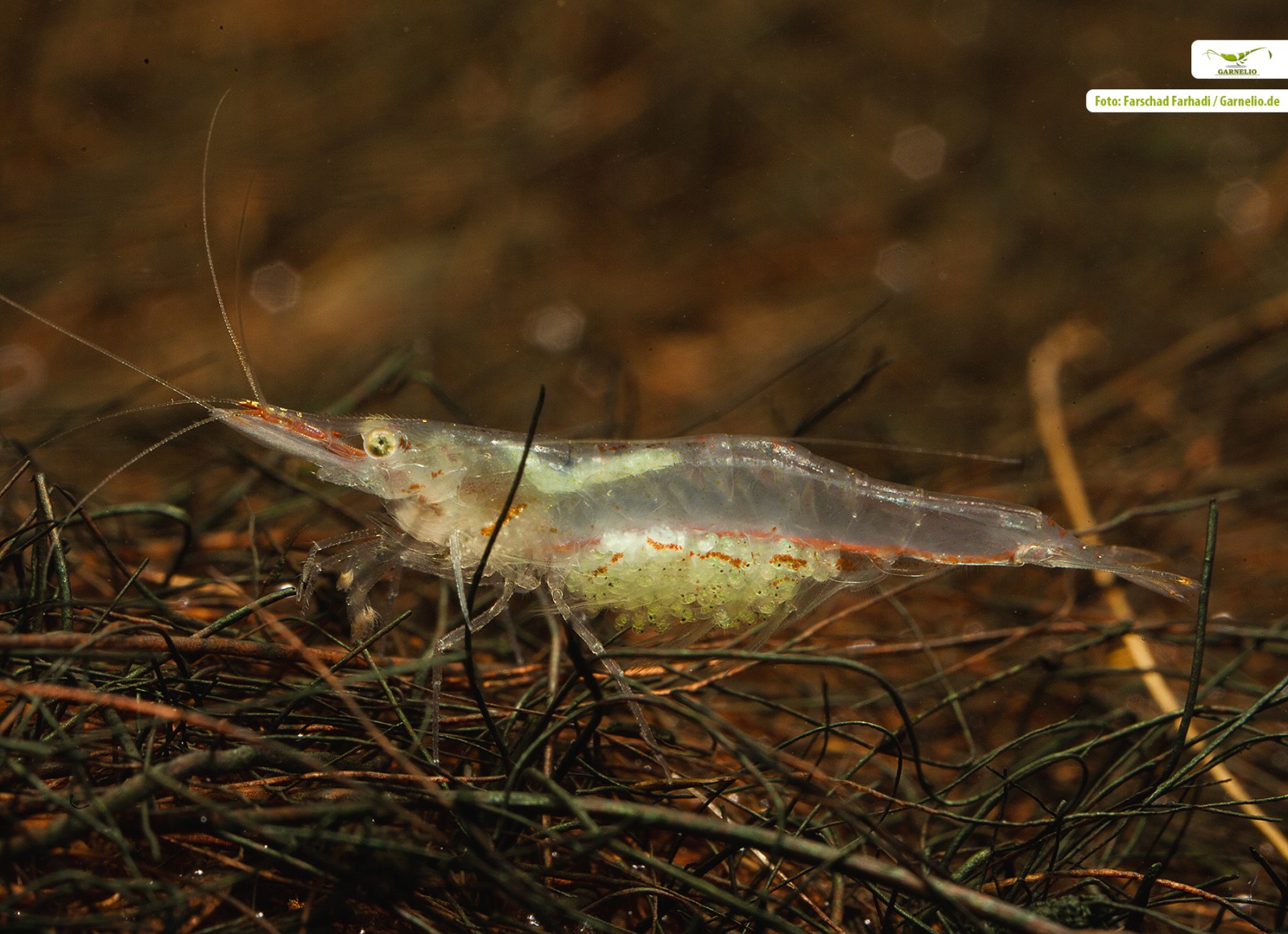
Leaves of native trees used brown in the aquarium
Beech
Beech leaves contain tannins and can acidify the aquarium water a little. It has a slight antibacterial effect and can turn the water a slight yellowish color.
Beech leaves are relatively hard and are not immediately eaten by dwarf shrimp in the aquarium.
Beech trees are typical forest trees, rarely seen in parks or open areas. Often beech leaves remain on the tree for a long time - so there is no need to pick them up from the ground.
Copper beech
The blood beech is a cultivated form of the beech. Its dark red leaves make it a popular ornamental tree for parks and gardens. The foliage should only be used when completely brown.
Oak(oak bark)
Oak foliage is a popular foliage in aquariums. Its relatively high tannin content can turn the water yellowish to light brown. Oak leaves are quite coarse and firm and are eaten late in life.
Oaks are typical forest trees, but they are also found in parks.
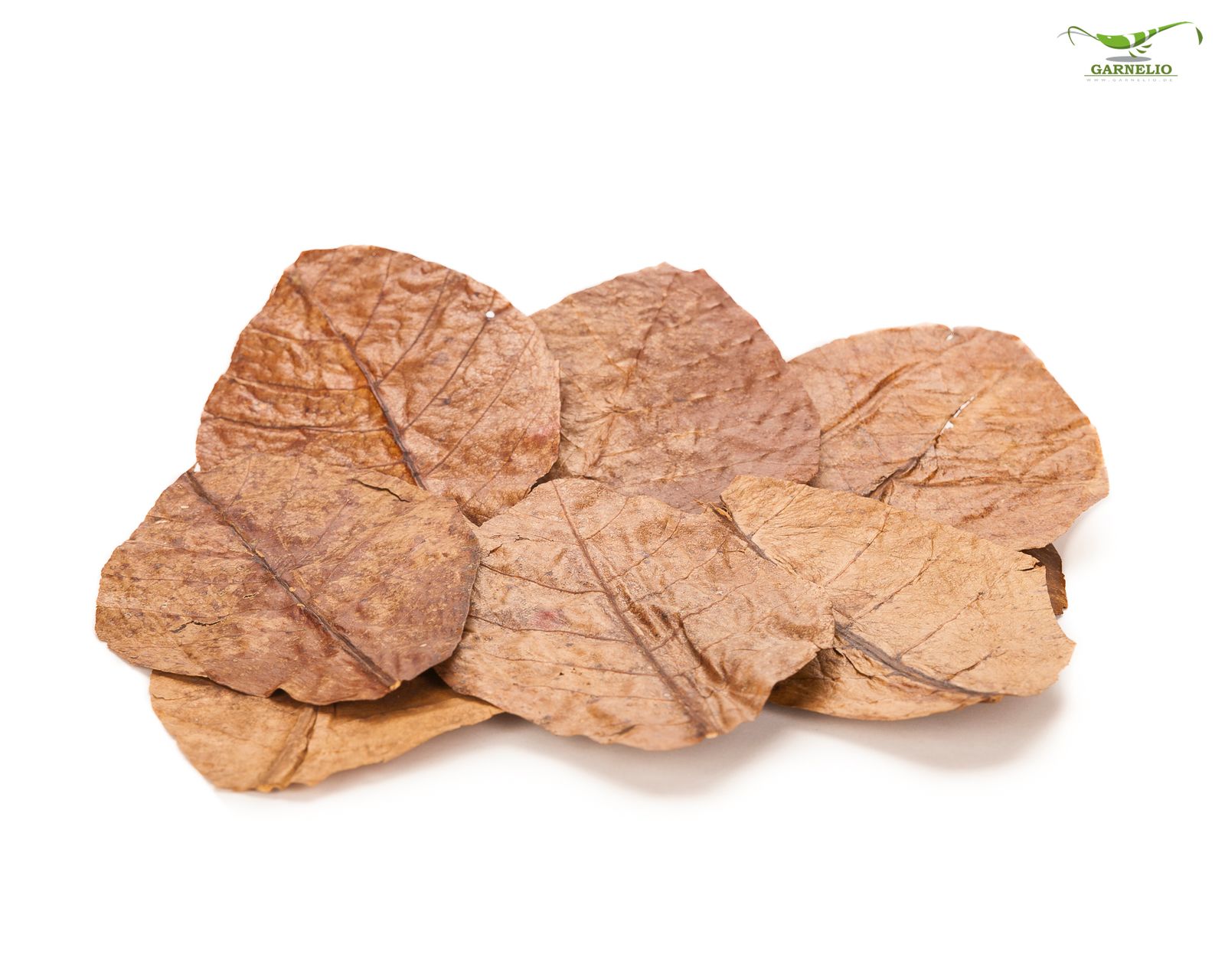
American red oak
The red oak from North America, which is actually not native to us, is often used as a park tree or ornamental tree, now and then you can meet feral specimens outside. Ornamental trees are used in parks, but they can also be found feral in nature.
The intensely colored leaves should be completely brown before feeding. Otherwise, the same is true for American red oak foliage as for oak foliage.
Maple(buy)
Be careful with the various maple species - the foliage is highly sugary. Yellow, orange and red maple leaves should therefore be used sparingly in the aquarium, even if they look really nice. Soil bacteria gradually break down the sugar in the fallen maple foliage. If the leaves are completely brown and crackle-dry, they can be taken as permanent food without hesitation.
Maple trees are often found in parks, but they can also be found in forests or - especially the smaller maple species such as the Japanese fan maple - in home gardens.
Chestnut
Chestnut leaves are often attacked by the chestnut leaf miner, which manifests as dark brown spots. These leaves can be fed without concern in shrimp aquariums or crab tanks and in crab terrariums; the larvae are non-toxic and provide welcome protein.
Chestnut trees, which grow to be huge, are a typical shade provider in beer gardens or parks, but they can also be found in the forest.
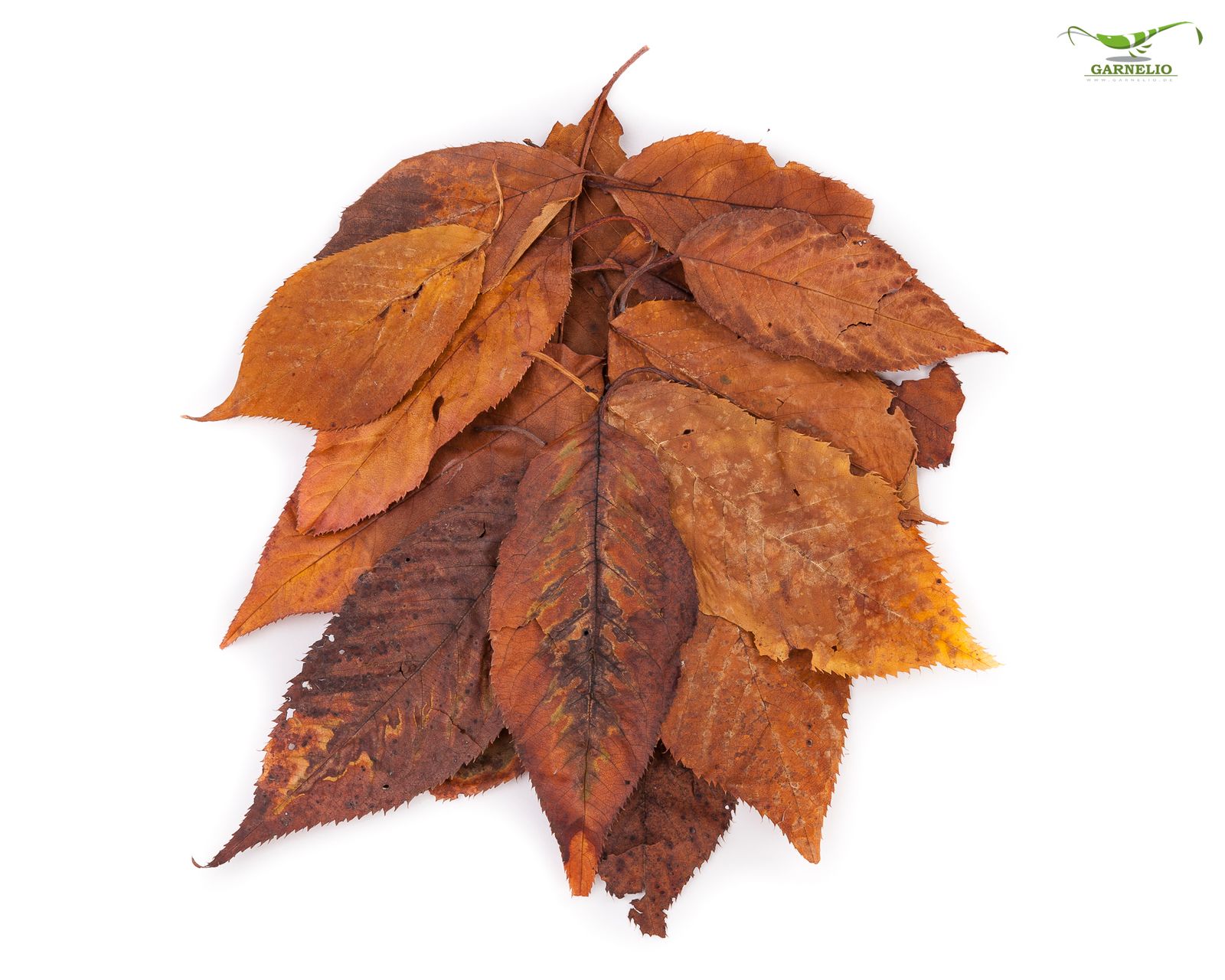
Sweet chestnut
The brown foliage of the sweet chestnut is also a good permanent food in the invertebrate aquarium.
Sweet chestnuts are park trees, but they can also be found in forests and (large) gardens.
Fruit trees(plum, cherry, apple)
The fruit varieties belonging to the rose family are perfect for the aquarium, provided that the trees are not sprayed! In addition to the well-known fruit varieties such as plum, cherry, apple, quince and pear, wild fruit trees such as medlar, weeping cherry (the foliage is not poisonous, even though this is often claimed), wild cherry, rock pear, rowan and wild service tree are also included here. The foliage of ornamental fruit such as blood plum is also suitable, provided that it is really completely brown and no longer red.
Birch(buy)
The green foliage of birch trees is used as a remedy, but it can also be used brown as a permanent food.
Birches grow in gardens, parks, heaths and also in loose forests.
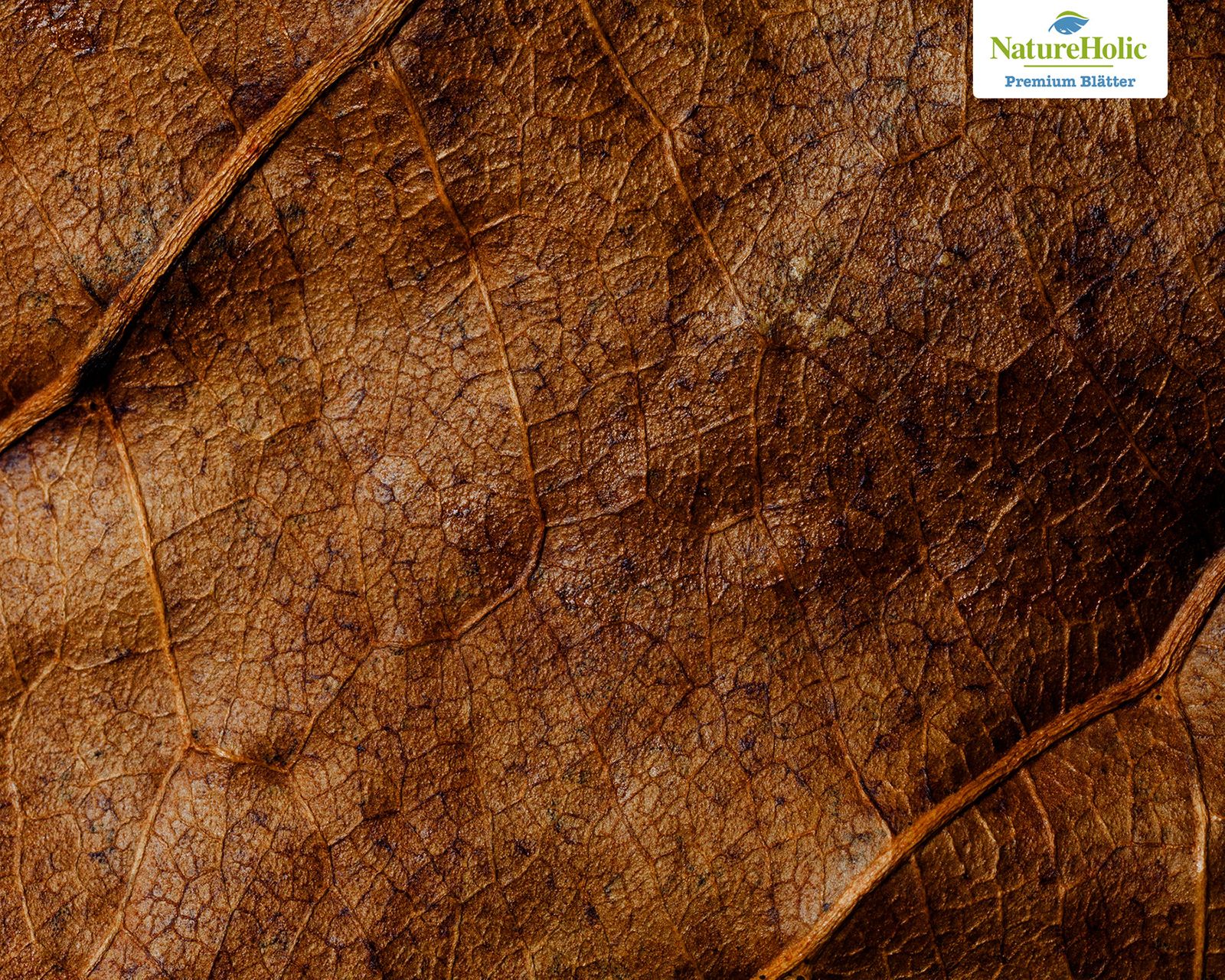
Alder(cones)
Alder cones are often used in shrimp aquariums to mildly acidify the water, but you can also use alder leaves brown very well in the aquarium.
Alder cones should only be collected when they are already completely open and brown. However, rain in the fall and winter washes out much of the active ingredients, so alder cones collected in the spring are largely ineffective. After the first frost is a good time to collect.
Alder can be found on moist ground at the edge of bodies of water.
Hornbeam
The brown foliage of hornbeam or white beech often hangs on trees or hedges in the spring, it can be harvested for a very long time. It is relatively thin and is readily eaten.
You can often find hornbeam as hedges, the trees are often in forests, parks or gardens.
Hazelnut(buy)
Hazelnut foliage is very thick and is not well eaten initially. However, after some time, when it has been broken down by bacteria, shrimp will readily accept this foliage, and crayfish earlier.
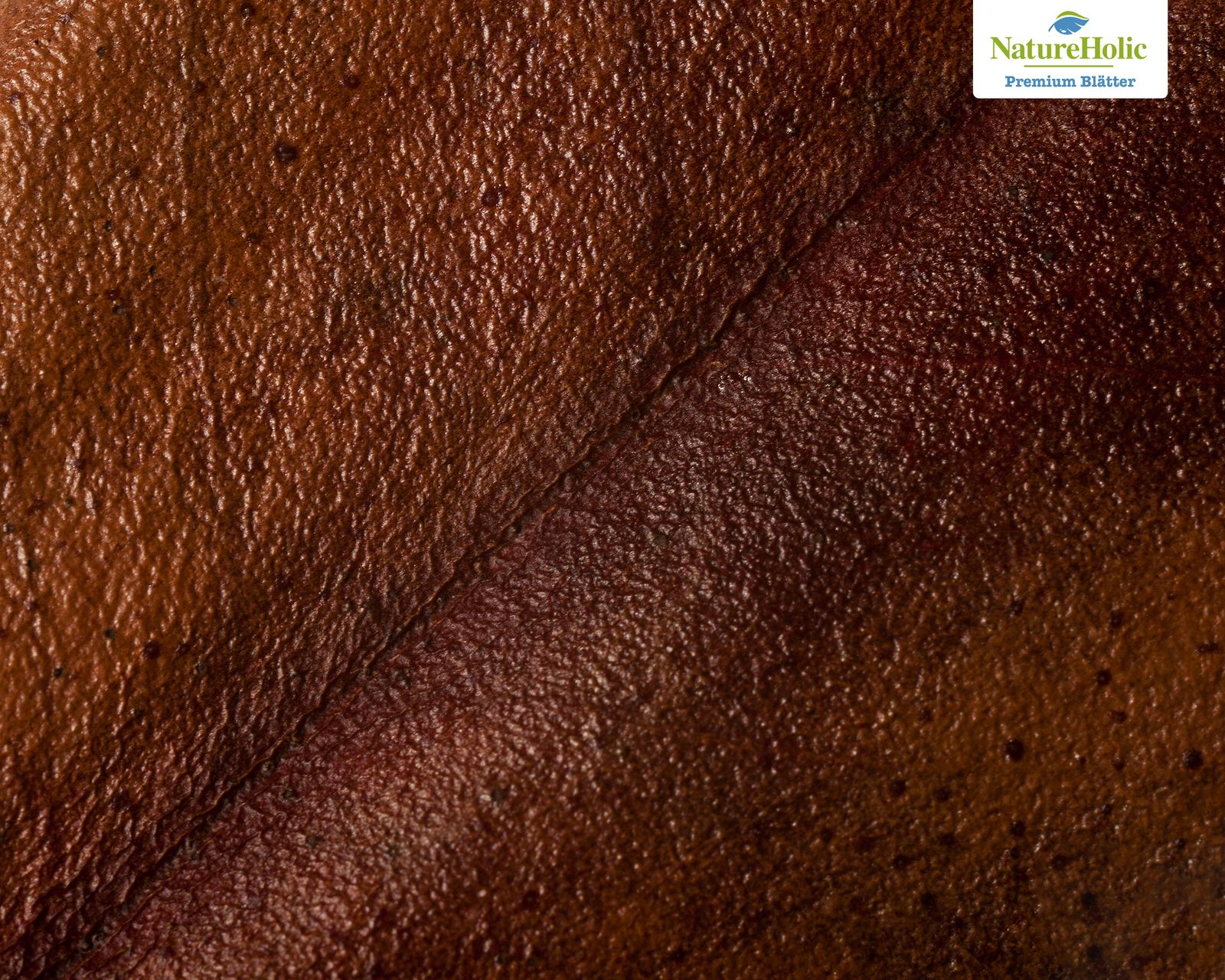
Elm
Elms have fairly soft foliage that is well eaten.
Elm trees grow in riparian forests and along the edge of water bodies, they like moist soil. They often grow together with alders.
Mulberry
Mulberry foliage can also be fed brown as a permanent food in the aquarium with shrimp, snails or crayfish.
Mulberry trees are often found in parks and gardens, in fields, and they can also be found running wild in the wild.
Magnolia
Magnolia leaves are very thin and are eaten quickly and readily.
Magnolias are large shrubs, mostly planted in parks and home gardens, they practically do not occur in nature. Magnolia leaves are yellow for a long time and definitely should not be used as permanent food until they are all brown and really sizzling dry.
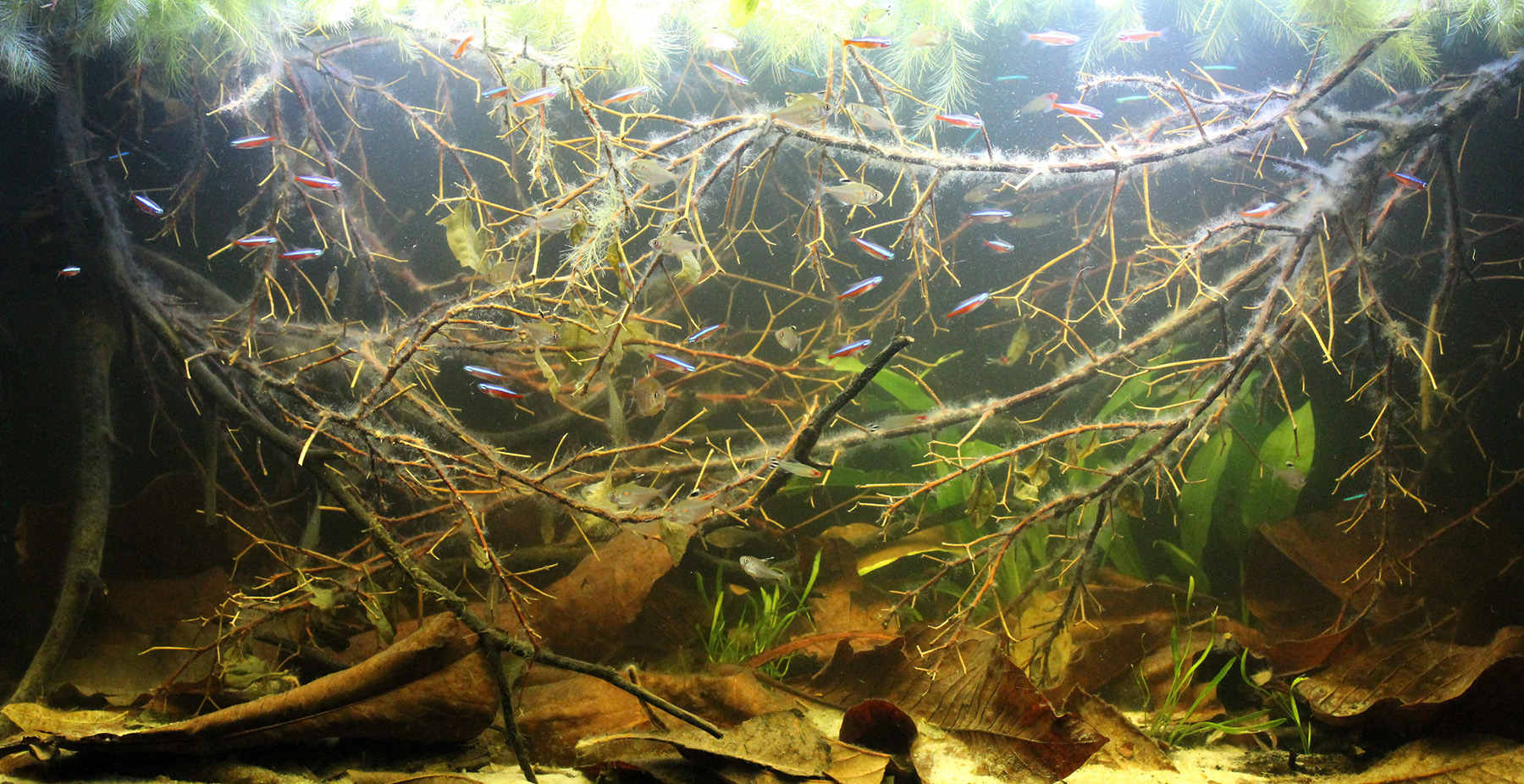
I don't have any trees nearby, are there any alternatives?
Alternatives for self-collected foliage can be found in our store. Here you can buy foliage from native trees, but also foliage from the countries of origin of our invertebrates.
Sea almond leaves(small/large)
Sea almond tree leaves, also called Catappa Leaves, are real all-rounders in aquaristics. The leaves of the sea almond tree (Terminalia catappa) are effective against bacteria, fungi and against some viruses, they help with mucous membrane problems and with injuries, sea almond leaves contain a large amount of tannins and humic acids, and they are eaten very readily after some time in the aquarium.

Mangrove leaves(buy)
Mangrove foliage is a very pristine food for shrimp, crabs, and especially crabs. Mangrove crabs mainly eat only this foliage in nature. The tannin content is high, which explains the beneficial effect of this foliage in the aquarium.

Mulberry leaves(buy)
Tasty AND healthy - can't be? Our mulberry leaves will teach your shrimp, crayfish or dwarf crayfish in the aquarium better. They are a real hit, shrimp and crayfish just love mulberry leaves - and since the leaves contain many valuable ingredients and support the health, reproduction and molting process of our favorite aquarium animals, they are a real winner!
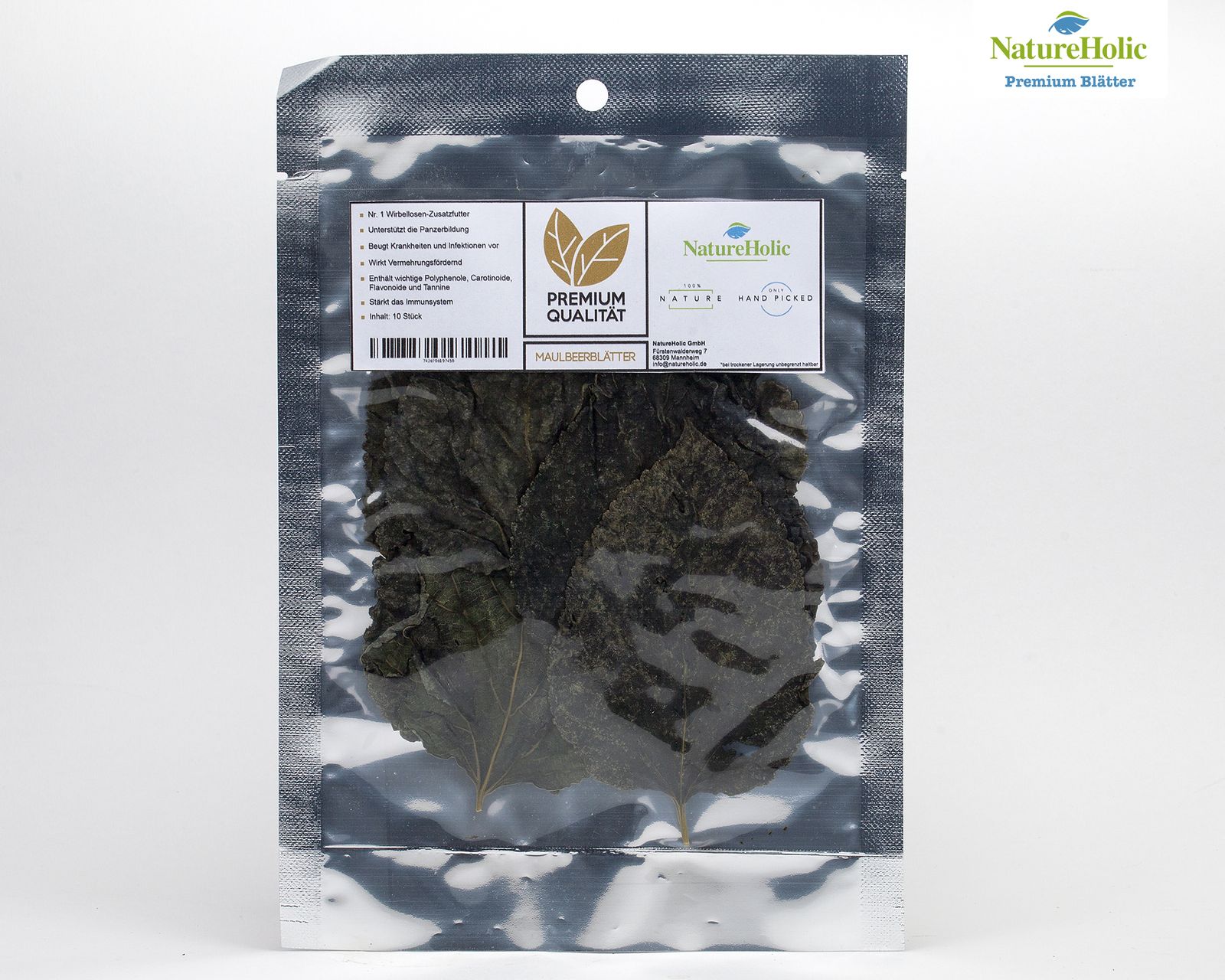
Source: https://www.garnelio.de/en/blog/nutrition/foliage-for-the-aquarium-foliage-list
Post a Comment for "List of Leaves to Feed Shrimp"